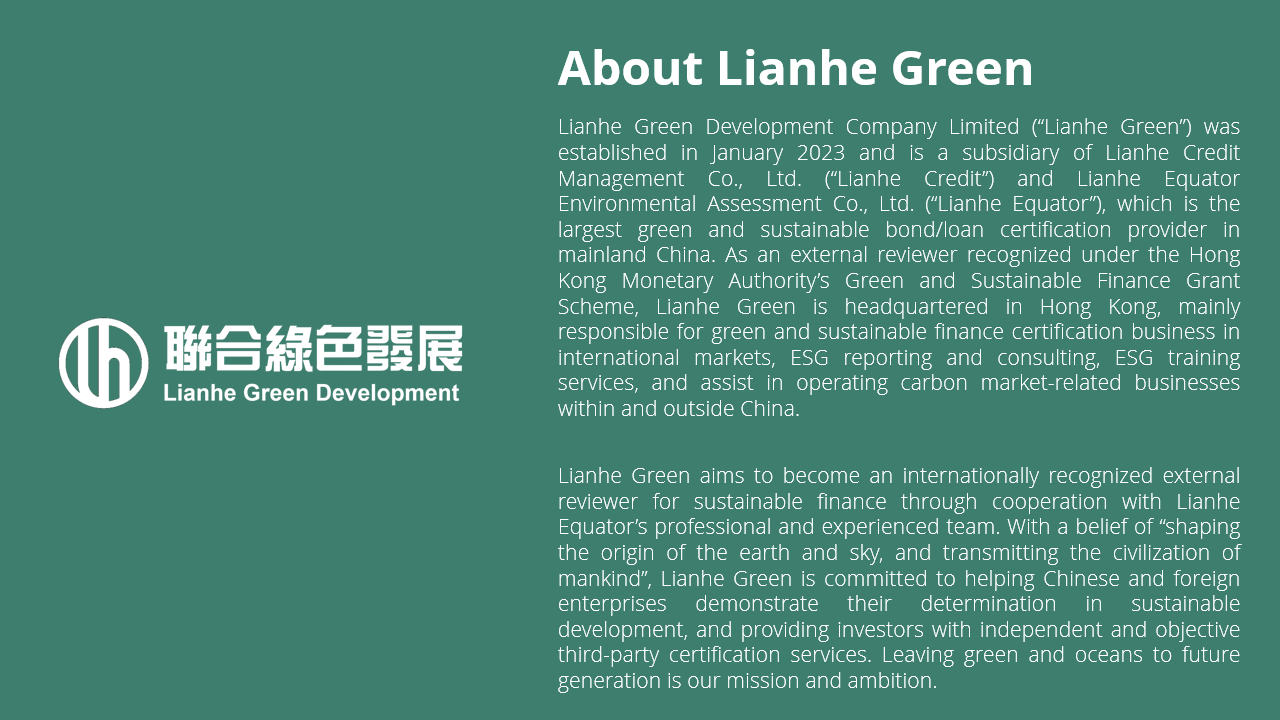 return
return
 current location:Home
current location:Home
 Reports and Insights
Reports and Insights
 Reports and Insights
Reports and Insights
 [Monthly Report] Carbon Credit Opportunity: Unlocking Corporate Climate Impact and Market Value
[Monthly Report] Carbon Credit Opportunity: Unlocking Corporate Climate Impact and Market Value
 return
return
 current location:Home
current location:Home
 Reports and Insights
Reports and Insights
 Reports and Insights
Reports and Insights
 [Monthly Report] Carbon Credit Opportunity: Unlocking Corporate Climate Impact and Market Value
[Monthly Report] Carbon Credit Opportunity: Unlocking Corporate Climate Impact and Market Value
category:Reports and InsightsRelease time:2025-09-30

Following the launch of the Core Climate platform by Hong Kong Exchanges and Clearing Limited (HKEX) in 2022, the release of the Carbon Credit – Buyers’ Guide[1] in September 2025 provides a systematic and practical reference framework for market participants. It helps companies strategically select appropriate carbon projects and carbon credits during their decarbonization journey.
Lianhe Green believes this Guide is not only a key step toward the standardization of Hong Kong’s carbon market, but also demonstrates that carbon credits are evolving from an “optional” instrument to a core tool for corporate climate responsibility.
Key Highlights of the Carbon Credit – Buyers’ Guide
The Guide clearly defines carbon credits as tradable units representing the avoidance or removal of one tonne of carbon dioxide or carbon dioxide equivalent. Their creation involves a full lifecycle:
These credits can be traded on platforms such as Core Climate, and companies may purchase and retire them to take responsibility for residual emissions that are currently unavoidable.
While understanding the carbon credit lifecycle is essential, the Guide emphasizes that the more critical step is how companies utilize carbon credits within their broader decarbonization strategies.
According to Lianhe Green, the Guide offers actionable recommendations:
Dual Drivers of Policy and Market: Carbon Credits as a Core Climate Mechanism
National Policy Advancements: China's Carbon Market Accelerates
In August 2025, the General Office of the Communist Party of China Central Committee and the General Office of the State Council jointly issued guideline to advance low-carbon transition, strengthen national carbon trading market[2], stating that:
Shortly after, on September 24, 2025, President Xi Jinping announced China’s updated 2035 Nationally Determined Contributions (NDCs)[3] at the United Nations Climate Summit, including:
Lianhe Green believes these policies signals strongly support the development of Certified Voluntary Emission Reductions (CCERs) through improved methodologies, enhanced oversight, and expanded application scenarios (e.g., in green supply chains, corporate responsibility, and climate neutrality). The emphasis on expanding participants, diversifying carbon products, and strengthening disclosure provides greater clarity and momentum for market players.
Together with China’s 2035 NDCs, this trajectory affirms that carbon credit mechanisms are playing an increasingly central role in supporting national emission reduction targets, energy transition, and market-based climate governance. The Buyers’ Guide aligns closely with these national strategies, reinforcing that carbon credits are becoming a foundational tool in corporate climate action under the dual carbon goals.
How to Select High-Integrity Carbon Credits?
Through its work in green finance certification, carbon verification, and climate neutrality roadmaps, Lianhe Green has observed that, amid tightening global climate regulations and growing supply chain pressure, companies are recognizing that internal emission reductions alone are insufficient to address medium- and long-term climate responsibilities.
While companies are actively reducing emissions via green power procurement and supply chain optimization, Scope 1 and 2 emissions are still constrained by local energy structures and technology readiness. Scope 3, involving upstream and downstream partners, is even more complex, with high data uncertainty and management challenges—making it the most difficult category to decarbonize.
In this context, carbon credits are evolving into a key component of ESG strategy, investment ratings, green supply chain management, and cross-border compliance.
The Buyers’ Guide recommends a two-stage screening approach:
Project Selection
Credit Selection
The Guide explicitly states that carbon credits should complement, not replace, internal emission reductions. Companies should pursue mitigation and the use of high-integrity carbon credits in parallel to achieve genuine climate neutrality.
Lianhe Green’s Professional Services and Insights
As an independent third-party specializing in climate and GHG verification, Lianhe Green Development Co., Ltd. operates under international standards such as ISO 14064-3 and ISO 14065, providing services across both nature-based and technology-based projects, including:
Lianhe Green also serves as a verifier for Building Carbon Credit (BCC) projects supported by the Guizhou Green and Low-Carbon Exchange[4]. BCCs quantify and certify GHG reductions from voluntary projects in the building sector, which are then registered as voluntary emission reductions. Companies can purchase and retire BCCs to offset emissions at the operational or project level.
Additionally, Lianhe Green’s parent company, Equator China, is an active player in China’s carbon services landscape, including participation in the Tianjin Emissions Trading Scheme (ETS), supporting companies in emissions data verification and compliance reporting.
Lianhe Green has observed that companies are increasingly integrating carbon credits into ESG disclosure, climate neutrality strategy, supply chain management, and green finance operations—transforming carbon credits into a core component of strategic asset management.
ISO × GHG Protocol Strategic Partnership: Toward Unified Global Carbon Accounting Standards
In September 2025, the Greenhouse Gas Protocol (GHG Protocol) and the International Organization for Standardization (ISO) announced a strategic partnership[5] to align carbon accounting and reporting standards globally. This collaboration aims to address the challenges faced by companies due to multiple overlapping standards and inconsistent methodologies. It covers corporate carbon footprint (CCF), product carbon footprint (PCF), as well as project-level accounting and verification standards.
Lianhe Green believes this partnership will bring three key benefits:
Driven by China’s dual carbon goals and tightening global compliance requirements, international standard harmonization is not only inevitable but also essential for building credible, comparable, and auditable carbon asset systems for enterprises.
Conclusion: Carbon Credits — From Responsibility Instrument to Strategic Asset
As of 2025, carbon credits are no longer an optional CSR tool, but a core mechanism supporting corporate decarbonization, ESG accountability, green finance compliance, and resilient supply chain management.
From the publication of HKEX’s Buyers’ Guide, to China’s national roadmap for CCER development, to rising quality expectations from enterprises and the ISO × GHG Protocol alignment, the carbon credit market is undergoing a pivotal transition marked by institutional maturity, system integration, and application deepening.
Lianhe Green observes that companies are proactively embedding carbon credits into climate governance, investment logic, and cross-border compliance planning. Carbon credits are becoming a bridge between policy, markets, technology, and accountability—and a strategic asset with growing value under China’s dual carbon strategy and converging international climate rules.
Lianhe Green will continue to uphold its professional, independent, and impartial service philosophy, helping companies build credible, comparable, and verifiable carbon asset systems, and supporting their journey in the carbon market to contribute to a greener China and a more sustainable world.
[2] China issues guideline to advance low-carbon transition, strengthen national carbon trading market
